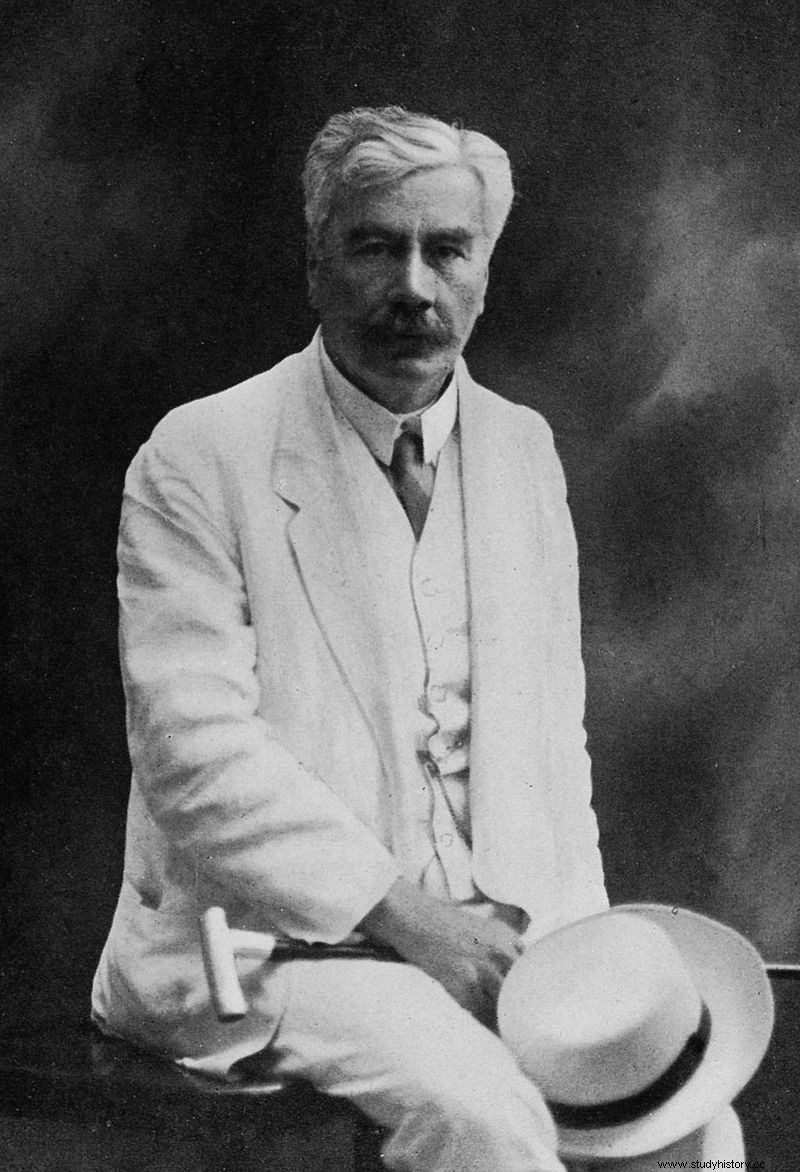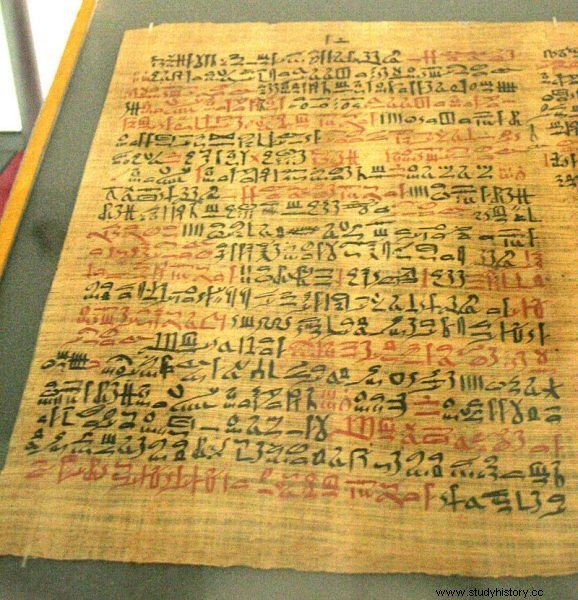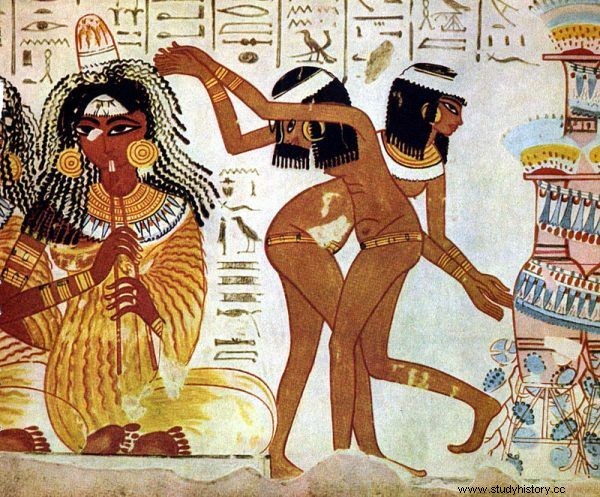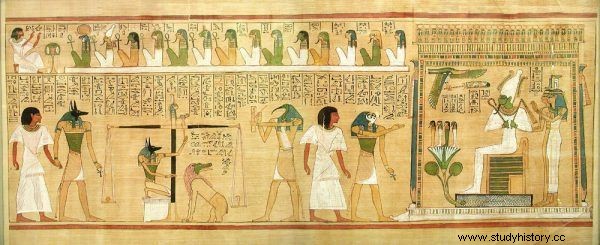The existence of the medical profession in antiquity does not surprise anyone. But do we know what the Egyptian pharaohs and the powerful of the other world actually suffered from?
Situated at the foot of the Nile, Egypt became a world power between 1570 and 1070 BC. It was the period of the reign of the eighteenth, nineteenth and twentieth dynasties. Reaching the top of his power, he did not avoid its health side effect.
The industrial revolution at the foot of the pyramids?
According to the scientist and surgeon Andrew T. Sandison, the breakthrough in research into Egyptian ailments came thanks to a French doctor. While 43-year-old Marc Armand Ruffer was researching diphtheria serum, he unexpectedly fell ill with diphtheria, an infectious disease that is transmitted by droplets. For this reason, in 1893, he decided to go to Egypt, the climate of which was considered extremely favorable for those affected by bacteria that damaged internal organs. There the doctor not only recovered, but became a pioneer of bacteriology and one of the most prominent Egyptologists.

Sir Marc Armand Ruffer, despite his illness, tirelessly researched Egyptian mummies. Today he is considered by some to be the pioneer of palaeopathology, or the science of ancient diseases.
A mummy from the 20th Dynasty (1186-1070 BCE) discovered by a doctor turned out to be still the key to the mystery of the death of an embalmed man. Ruffer determined that he suffered from pneumoconiosis, a disease considered so far the fruit of the industrial revolution, mainly the development of coal mining. Subsequently examining the mummy of Nesperehap, the priest of the god Amun from around 1,000 B.C., Ruffer noticed bone changes typical of Pott's disease:spinal tuberculosis. So to another "disease of civilization".
Further finds, as Jürgen Thorwald writes in Ancient Medicine. Its secrets and power , they were just as amazing:
(…) married couples, men, women and children who died of spinal tuberculosis were found, buried in a common grave, side by side. Where Pott's disease prevailed, pulmonary tuberculosis could not be completely absent (...).
And indeed - there was also this ailment in ancient Egypt, associated rather with crowded, 19th-century metropolises or with the slums of today's Bangkok. Egyptian medical papyri bear the description of people "spitting blood." And only scientists are still unable to unravel how tuberculosis developed under the conditions at that time. The country's extremely dry climate, famous both in antiquity and today, may have contributed to this. Egyptologists, however, more and more often point to the development of civilization, including:population growth, urban density and domestication of cattle as the main reasons for the expansion of the pathogen, Mycobacterium tuberculosis .
Items Falling off
Elliot Smith was so fascinated by mummy research that he once took the mummy of King Tuthmosis III (1491-1436 B.C. Cairo, because it was the first in Egypt to have X-ray machines .
Cited in the book Ancient Medicine. Its secrets and power an anecdote about the actions of Ruffer's successor in Egypt, Elliot Smith. The equipment he used in his research allowed him to confirm the occurrence of other diseases in the 21st century thousands of years earlier. And this occurrence was so frequent that, according to period sources, it was remedied by specially trained specialists.

Ancient Egyptian medical papyri provide a wealth of information on the digestive diseases of the ancients. One of them, the so-called Ebers papyrus from 1550 B.C.E. contains meticulous descriptions of gastrointestinal and rectal diseases.
It was not only the staff of gods, demons and others that cared for the health of the ancient mighty. The tombstone inscriptions speak of someone else. The existence of an "doorman or caretaker" to keep the anus from falling out proves the existence of serious digestive disorders in ancient Egyptians. Written around 1550 BCE. The Ebers papyrus, apart from problems with the movement of the rectum, also describes various types of rectal edema and ulceration. All these ailments today are mainly caused by eating disorders and the abuse of laxatives.

Not all ancient Egyptian wall paintings show beautiful women dancing and paying tribute to the goddess. Some of them, hidden in the tombs much deeper, present views that are much less aesthetic…
The New Kingdom bas-reliefs discovered by Smith, deeply hidden from the human eye, also present less beautiful images. Smartly dressed women who feast, who then - possibly as a result of overeating - return the food they have eaten. Ancient Egyptian women as a model for today's bulimics? Not only! The pharaohs can be considered the fathers of the modern global epidemic:obesity. Are the slender and beautiful figures created by Egyptian artists, like Greek sculptures, only an idealized vision?
Post-death prayer for…. beer and meat!
Although embalming was not one of the most pleasant and most aesthetic activities - ripping with an iron, application of laxative oil is still nothing! (you can read about funeral services in ancient Egypt in Agnieszka Bukowczan-Rzeszut's article) - it allowed for fairly good preservation of the body. Thanks to this, Egyptologists could conclude that the beautiful and dignified Tuthmosis II, Ramses II or Amenhotep III were in fact fat men with drooping skin folds. Such fat people could not avoid civilization diseases.
Ramses II turned out to be a victim of atherosclerosis. One of its causes is the abuse of tobacco. However, known then only in America, could not cause this disease in Egypt. In 20th century textbooks, Ruffer came across information that degenerative changes in the arteries can also cause syphilis. However, Smith did not find any degeneration characteristic of this disease in any of the mummies he studied. Today it is known that the main risk factors for atherosclerosis include obesity and excessive fat consumption.

The Osiris posthumous tribunal was the terror of the ancient Egyptians. But aside from fear of the justice of the divine judge, mundane prayers for beer were also made to him.
Hieroglyphic records and tombstone pictures showed that the ancient Egyptians did not disdain fatty meat, obligatorily sprinkled with alcohol, i.e. a popular mixture responsible for degenerative changes in the arteries. It is in the ancient Egyptian tombs, as the Egyptologist and medical doctor John F. Nunn writes, that we find requests to Osiris, the Egyptian god of death and reborn life, for "thousands of loaves and beers, thousands of cattle flesh and thousands of birds." Fermented bread and yeast were the main ingredients of the Egyptians' favorite drink. A picture from thousands of years ago, and so little different from modern ...
Stool type as a symptom of neurosis
Mental disorders. One of the most serious and common diseases of the 21st century. However, it is impossible to diagnose from the mummy. Are you sure? The medical papyri from the era lead to a different conclusion:
However, careful examination of the gastrointestinal tract revealed a strange symptom:The Egyptians already knew what modern medical terminology describes as "sheep faeces" - a man's ball-shaped stool caused by intestinal contraction resembling sheep faeces, considered a symptom of disorders of the vegetative nervous system, and attributed to the dizzying pace of modern life .
Power struggles, intrigues, riots, assassination attempts, and the will to use lurked almost everywhere. No wonder the ancient Egyptians suffered from mental disorders. With the difference that when civilization diseases affected the then powerful and rulers, today they do not pay attention to the content of the wallet and social status.
Bibliography:
- Brandt-Rauf W. Paul, History of occupational medicine:relevance of Imhotep and the Edwin Smith papyrus , "British Journal of Industrial Medicine" 1987, no 44.
- Social and civilization diseases - selected issues , edited by Leokadia Bąk-Romaniszyn, Medical University of Łódź, Łódź 2013.
- History of medicine , edited by Tadeusz Brzeziński, Państwowy Zakład Wydawnictw Lekarskich, Warsaw 1988.
- Mummies, Disease and Ancient Culture , edit. by Aidan Cockburn, Eve Cockburn, Theodore A. Reyman, Cambridge University Press, Cambridge 1998.
- Nunn F. John, Ancient Egyptian Medicine , University of Oklahoma Press, Norman 2002.
- Sandison T. Andrew, Sir Marc Armand Ruffer (1859-1917) pioneer of palaeopathology , "Medical History" 1967 no 11 (2).
- Scheidel Walter, Death on the Nile:Disease and the Demography of Roman Egypt , Brill, Leiden 2001.
- Thorwald Jürgen, Ancient Medicine. Its secrets and power. Egypt, Babylonia, India, China, Mexico, Peru , trans. Albin Bandurski, Janina Szczaniecka, Wydawnictwo Literackie, Krakow 2017.
- White E.M. Jon, Ancient Egypt. Its culture and history , trans. Władysław Brodzki, National Institute of Ossoliński, Wrocław 1976.
